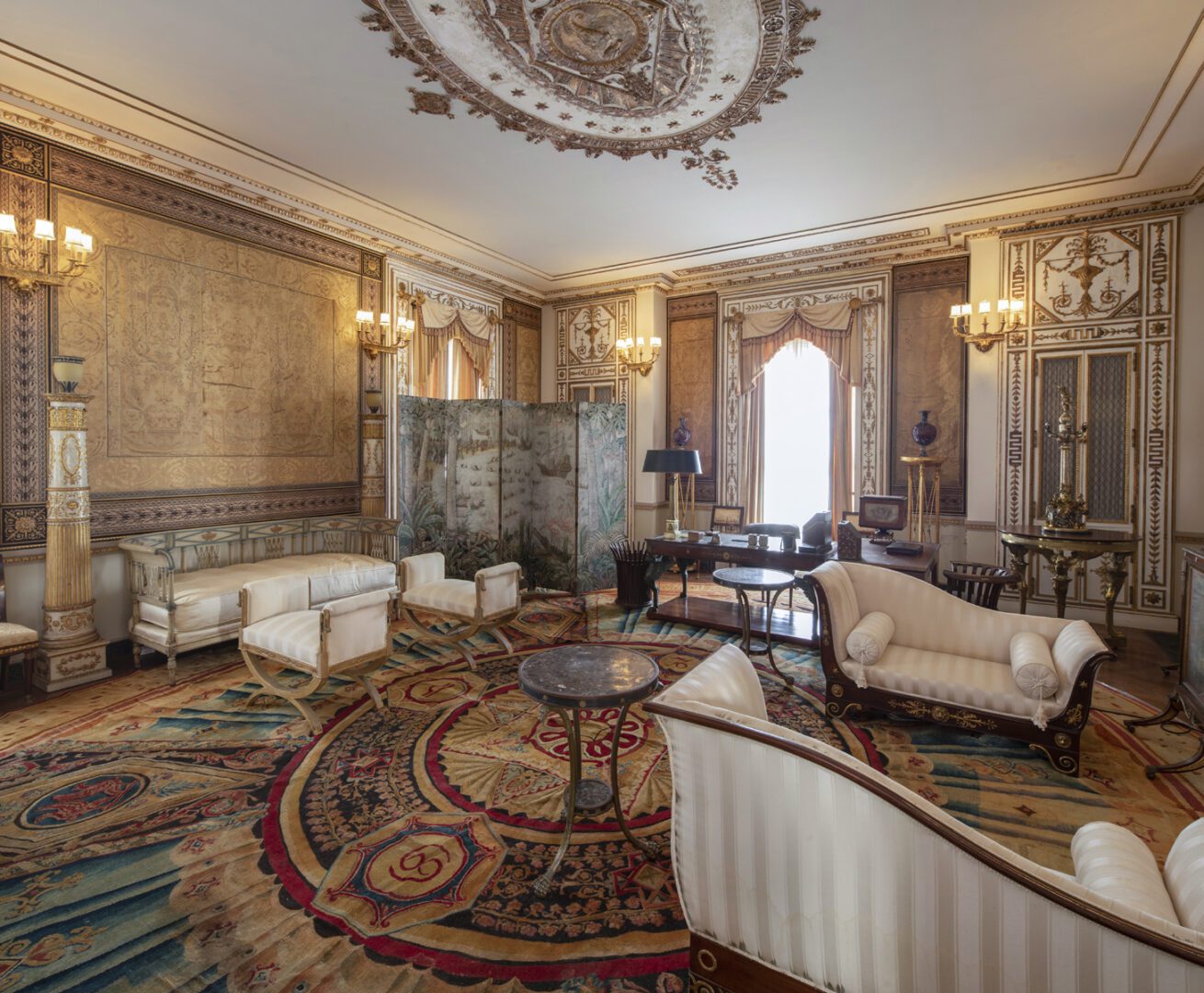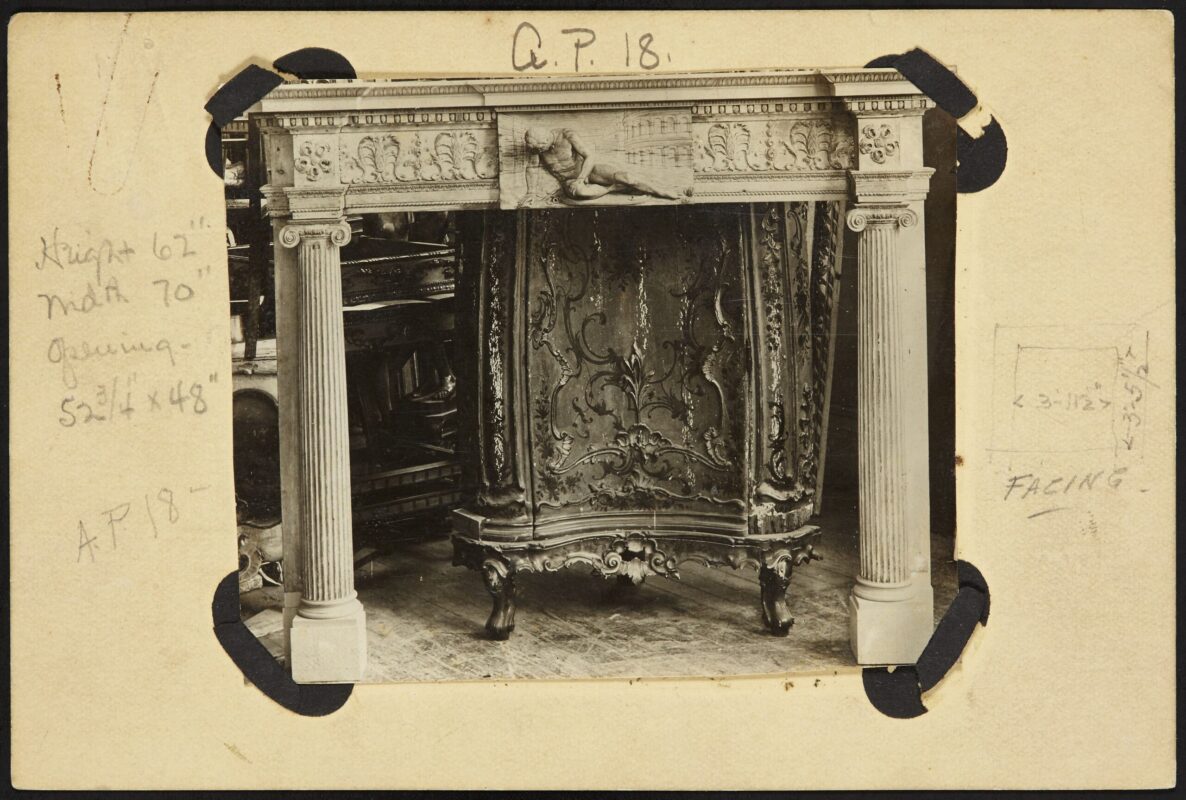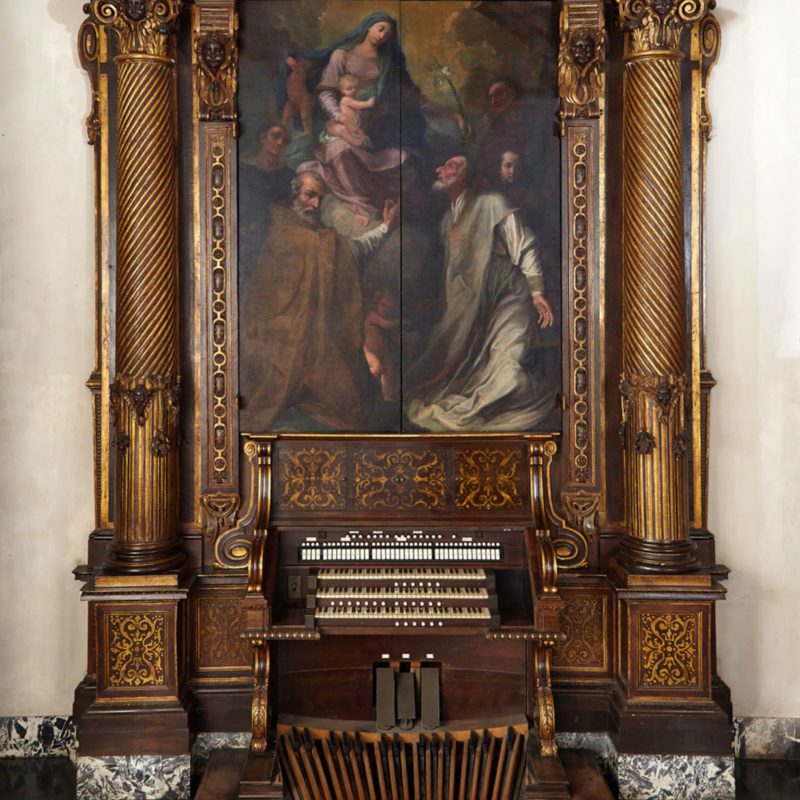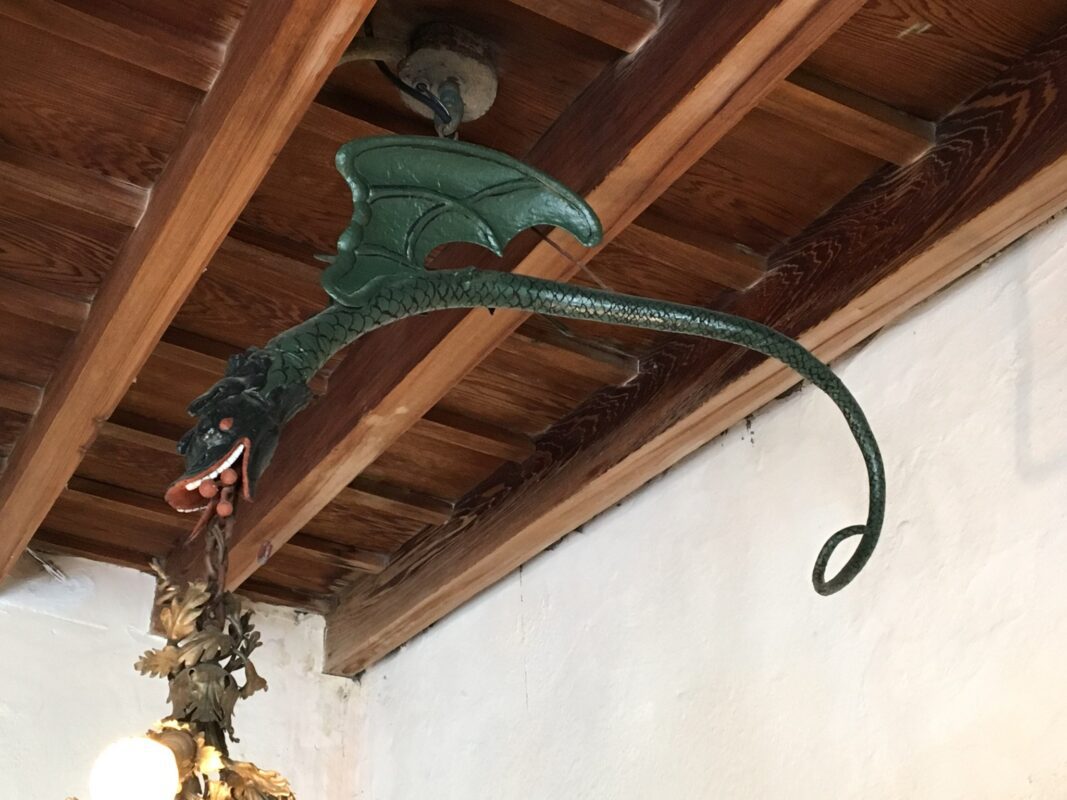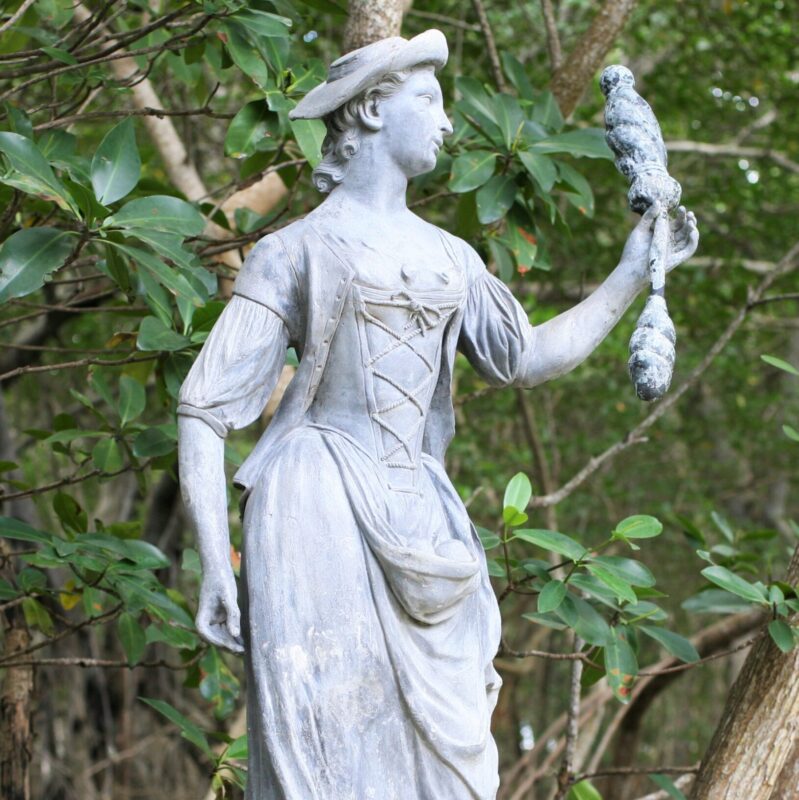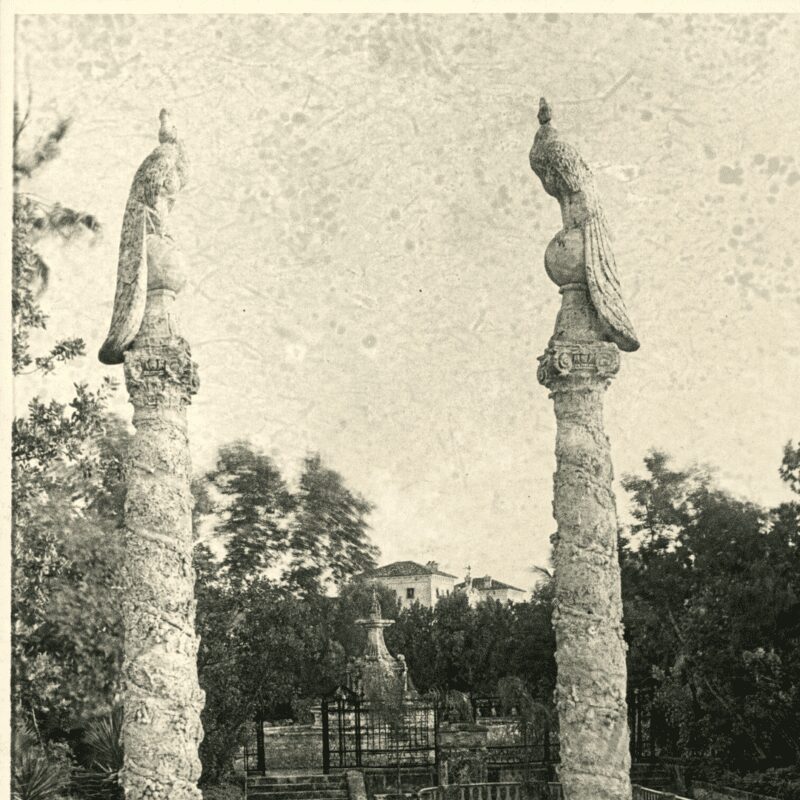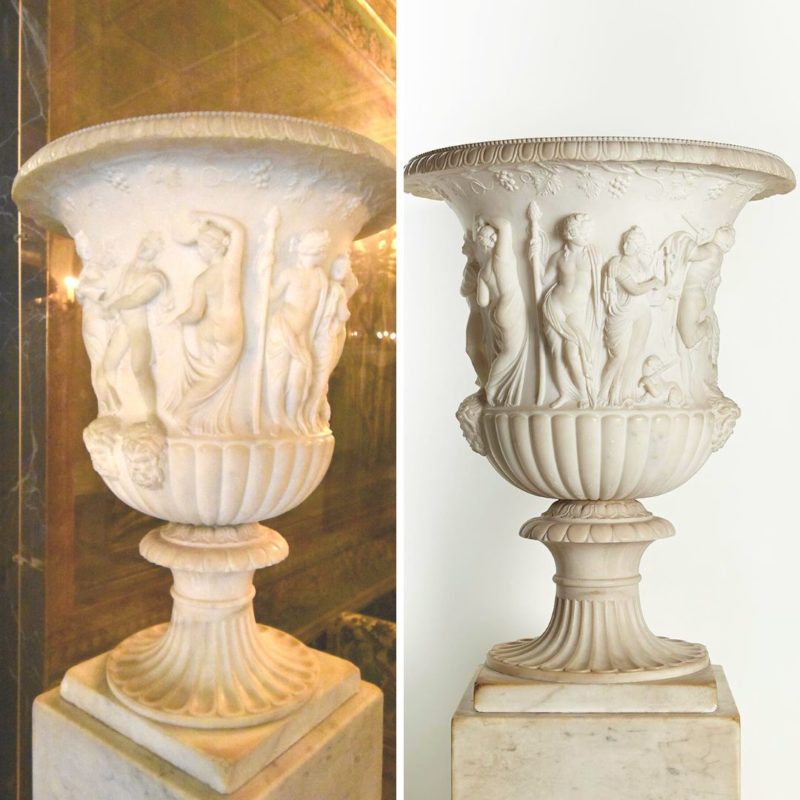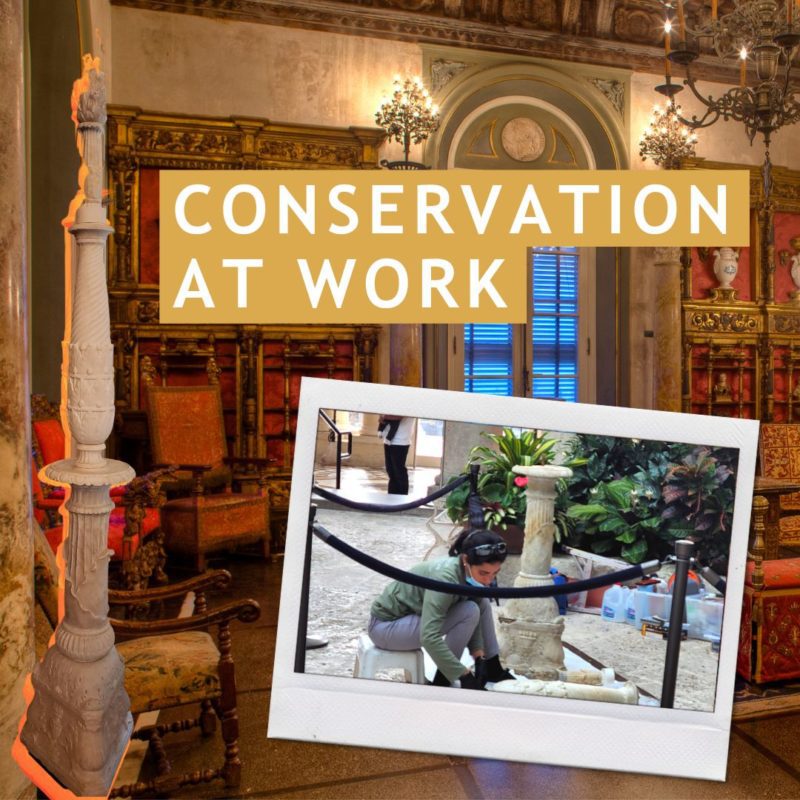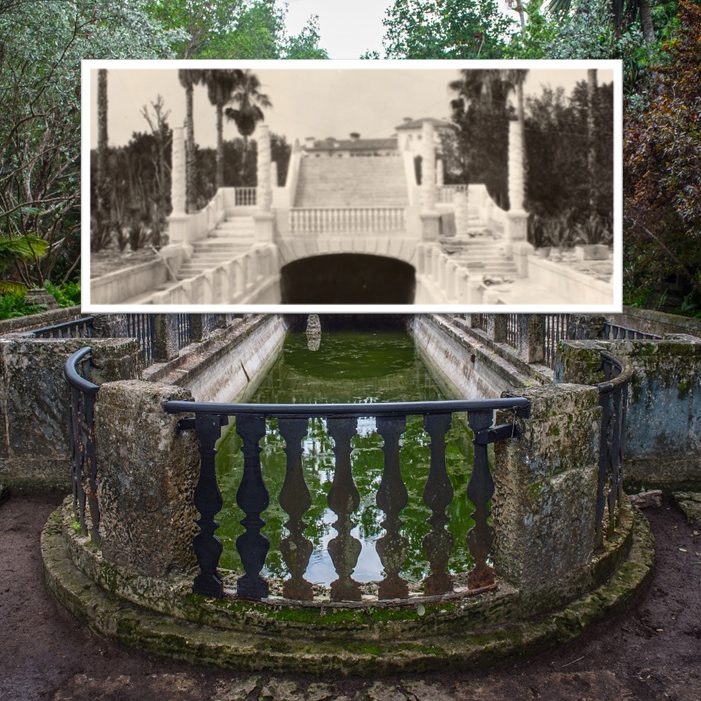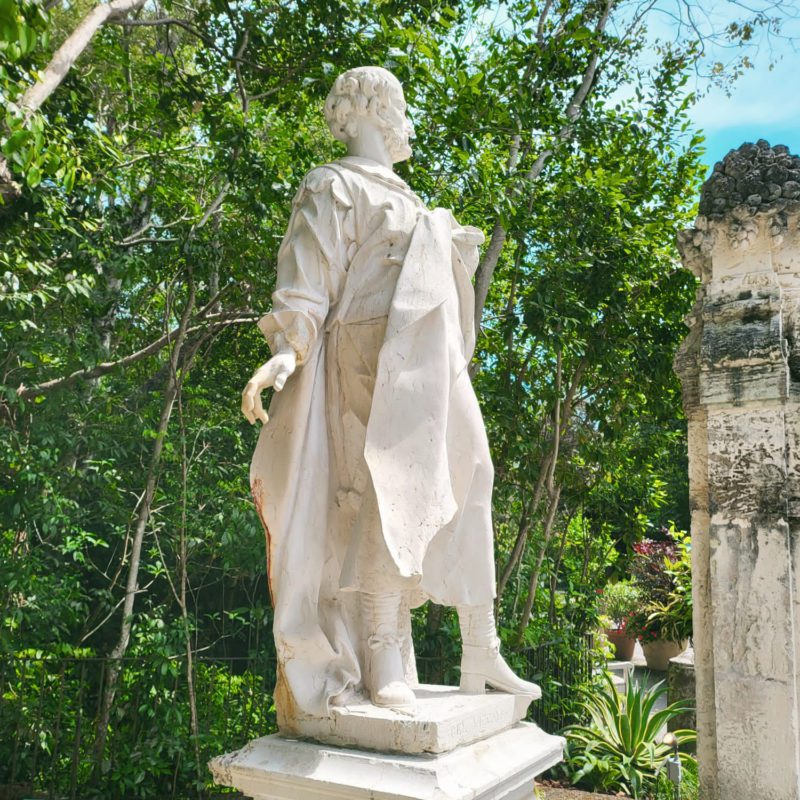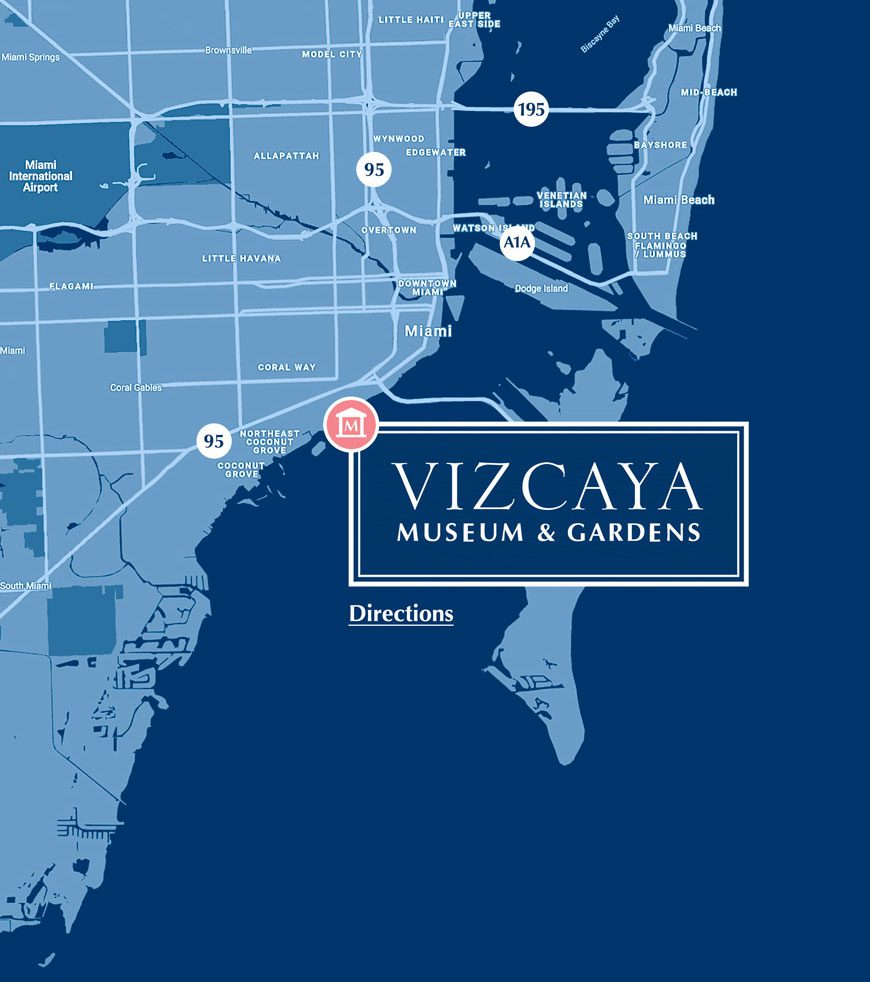Mr. Deering’s Sitting Room graces the second floor of the Main House with its grandeur. Designed in the neoclassical style, the room exudes symmetry, rigid lines, and opulent gilding, reminiscent of the 1750s European aesthetic associated with Napoleon Bonaparte.
This style also extends to other rooms, including James Deering’s bedroom, creating an aura of timeless elegance throughout Vizcaya.
A Room for Work
The Sitting Room served practical purposes for James Deering. Even in retirement, he remained engaged in family business matters, utilizing the room for work. Located right next to Mr. Deering’s bedroom, the Sitting Room is connected to his personal quarters through a room originally used as a personal closet, which now serves as HVAC storage.
He would sit at the main desk while his secretary occupied the adjacent desk. The room offers a fascinating glimpse into James Deering’s professional life, with artifacts like his portfolio, pen cases, cigarette cases, and ashtray, suggesting hours spent in this esteemed space.
Fascinating Artifacts
The Sitting Room houses captivating artifacts that add to its allure and historical significance.
Terracotta Sculpture

This terracotta cast by Albert-Ernest Carrier-Belleuse was made in France circa 1871 and depicts The Abduction of Hippodameia from Greek mythology.
During the wedding of Hippodamia and Pirithous, the barbaric centaurs who had been invited became wildly intoxicated, attacking the other guests and even the hosts. The centaur Eurytus attempted to carry off the bride, and a battle between the humans and the centaurs ensued.
Vizcayan Bay Screen by Robert Winthrop Chanler

Following the commission of the swimming pool ceiling mural at Vizcaya, Robert Winthrop Chanler delivered a five-panel decorative screen painted on both sides. The side that inspired the title portrays an imagined scene of the discovery of the Vizcayan Bay by European explorers.
Chanler borrows iconographic references from sixteenth-century northern European prints: the explorer on the large caravel represents the Florentine explorer Amerigo Vespucci in “Allegory of America” by Jan van der Straet, called Stradanus (ca. 1587–89), while the gathering of Native Americans depicted on the top of the second panel from the left is taken from a drawing by Jacques Le Moynede Morgues (1533-1588), a French artist who joined Jean Ribault’s expedition to the New World and depicted Native American life and culture.
The scene is framed by a dense forest populated with tropical flora and local fauna, including banana trees, pineapples, cacti, flamingos, lobsters, alligators, and pelicans. On the other side of the screen, Chanler creates a decorative landscape with butterflies and birds flying among bamboo trees in a monochromatic palette.
French Woolen Rug
Adorning the center of the room, an 18th-century French woolen rug captivates visitors. Originally square, it was creatively reshaped into a circular rug, adding a distinct touch to the space. After sustaining damage from Hurricane Irma, extensive restoration efforts were undertaken to preserve this priceless artifact.
Support Vizcaya’s Conservation Efforts
Help Vizcaya continue to preserve its vast collection by making an online donation.
Together, we can safeguard this rich cultural heritage for future generations to explore and appreciate.


